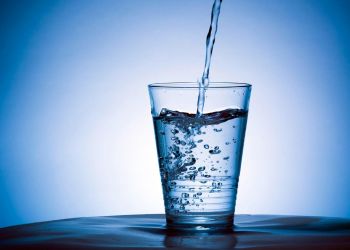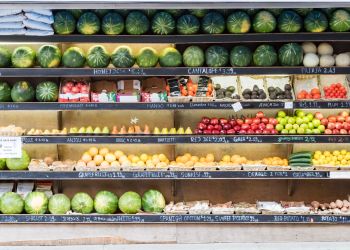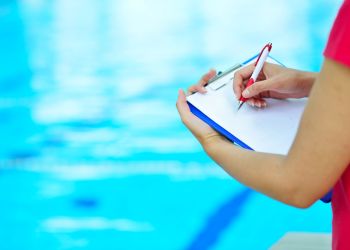A Primer on Climate and Health Data
Healthcare data is increasingly generated by electronic health records or EHRs (also known as electronic medical records/EMR). An estimated 88% of American physicians use EHRs in their offices (CDC 2021). Emergency department chief complaints serve as the primary data source for local health departments (LHDs) that employ syndromic surveillance, providing a snapshot of acute health problems within a community. Because EHRs allow for more complete and timelier surveillance than non-electronic systems, they can be extremely useful in tracking the impacts of extreme weather events such as heat-related illness during high temperatures and respiratory symptoms on days with unhealthy air quality. Additionally, real-time surveillance allows for faster responses to crises. Because of these benefits, data retrieval is a growing part of surveillance in many LHDs; however, use of EHRs is not always simple.
Challenges in Collecting EHR
EHRs are designed for billing, not for easy extraction or aggregation of data. Data requests require skilled data translators to navigate the legal agreements and infrastructure to transmit confidential data in a secure way that maintains compliance with HIPAA. Many medical facilities do not have the resources to access their own data due to inadequate staffing levels and associated fees. Although detailed patient profiles are regularly constructed from EHR, these profiles are largely the property of insurers and are unavailable to hospitals, health agencies, or patients (Balsari 2021). When data is available for review, it is often incomplete since data sold by insurers only includes their customer base.
Building Your Surveillance Program — Before Getting Started

An infographic on Building Your Climate and Health Data Surveillance Program. Download the infographic’s print version here. (Source: NACCHO)
- Consider your source. Working with a single health system in a small county may be easier than the large hospital associations found in certain states and many major cities. For-profit and lower-resourced hospitals are likely to require a financial or marketing incentive. Additionally, research hospitals will have an easier time providing data given the pre-existing internal structure for collecting and reporting it. Public health officials seeking to work with institutions of this type are encouraged to look for someone internally with an interest in collaborating.
- Understand your request. Much of the data relevant for surveillance is protected under HIPAA. LHDs seeking to collect this information may run into barriers if it contains anything potentially identifying, especially when dealing with small sample sizes. To circumvent this, it is standard to request reports on specific aggregated metrics (for example, the total cases of respiratory distress in a county instead of getting the individual counts from every local hospital). One practice employed by an interviewed jurisdiction is to suppress counts between one and nine to protect confidentiality.
- Be prepared to pay. As mentioned, data retrieval has associated costs. One jurisdiction working with a local hospital association reported a $1,000 price tag for five years’ worth of cases per year for three diagnoses, with an additional $1,000 for aggregated demographic information (i.e., sex and race/ethnicity).
Strategies for Establishing Surveillance Programs
- Use the legal system. Public health authority is required to acquire protected health information. State and federal mandates exist which require healthcare facilities to report certain metrics, and local political units have the power to make similar laws. This can be done for specific symptoms or during specific events. One large environmental health department reached for comment has a standing formal partnership with EMS, the medical examiner’s office, the county health department, and local utilities. During extreme heat events, these agencies collect and compile daily counts of heat-related illness, cardiovascular events, renal failure, respiratory illness, drowning, and power outages in order to inform local response efforts.
- Use existing surveillance programs. Finding a larger data pool managed by a public body can be a good alternative source to a private insurance company or hospital. Surveillance programs exist on the state and federal level to collect metrics which may be relevant to your climate program. Additionally, certain states have state-level claims databases run through the state government. LHDs in these states may find more success in collecting metrics from these agencies including county-specific information and demographic data. For instance, Washington state mandates the automated electronic reporting of data from all emergency departments via specialized messages to the state department of health. Other healthcare facilities are encouraged to voluntarily share information. The state also supports a community of practice that allows public health practitioners to share best practices and access resources related to data use.
- Look for funding. Many grant programs exist to support LHDs in their work, the funds from which can be put towards the fees for data acquisition. The grant parameters will typically determine the types of data that can be acquired with grant funds. Programs such as CDC’s Climate and Health Program are specifically intended for climate adaptation and resilience, while CMS’s Health Equity Data Research Program focuses on minority health research. Here are sources detailing more grant programs, including application periods:
Sources
Balsari, S., Kiang, M. V., & Buckee, C. O. (2021). Data in crisis — rethinking disaster preparedness in the United States. New England Journal of Medicine, 385(16), 1526–1530. https://doi.org/10.1056/nejmms2104654
Birkhead, G. S., Klompas, M., & Shah, N. R. (2015). Uses of electronic health records for public health surveillance to Advance Public Health. Annual Review of Public Health, 36(1), 345–359. https://doi.org/10.1146/annurev-publhealth-031914-122747
Thomas, M. J., Yoon, P. W., Collins, J. M., Davidson, A. J., & Mac Kenzie, W. R. (2018). Evaluation of syndromic surveillance systems in 6 US state and local health departments. Journal of Public Health Management and Practice, 24(3), 235–240. https://doi.org/10.1097/phh.0000000000000679





